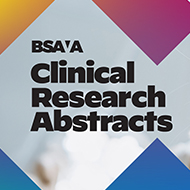WOAH monitoring zoonotic spread of mpox
Mpox is caused by the Orthopoxvirus MPXV.
The World Organisation for Animal Health (WOAH) has called for its members to report cases of monkeypox virus (MPXV) in animals to help it monitor the spreading novel mpox strain.
The World Health Organization has declared the current surge in mpox as a ‘public health emergency of international concern’, with cases increasing in African countries and beyond.
However, although mpox appears to be spreading among humans, the virus’ zoonotic origins have prompted WOAH to also monitor animal health.
Mpox, which was first seen in 1958, is caused by the Orthopoxvirus MPXV. Prevalent in West and Central Africa, MPXV has been found in rodents, primates, humans and other mammals.
Clinical signs of MPXV can include skin lesions, scabs, fever and swollen lymph nodes in both animals and humans. However, in some cases, there are no clinical signs.
MPXV can be transmitted from animals to humans, as well as from humans to animals.
There have been no recent reports of MPXV clade 1b in animals, and it is not a listed disease. However, WOAH has asked its members to inform them if they identify MPXV in animals and take appropriate risk mitigation methods.
WOAH asks that its members consider mpox as a differential disease in animals which show clinical signs compatible with the disease and that have been exposed to human cases.
As well as informing WOAH, members should use a One Health approach by maintaining communication between wildlife services, veterinary services and public health services.
The public should use appropriate hygiene and biosecurity measures around animals which have been in contact with probable mpox cases. They should wash hands regularly, wear personal protective equipment, and avoid animals found sick or deceased in endemic areas.
WOAH has produced resources and guidance to support members with reducing mpox risk in animals.
Image © Shutterstock



 The BSAVA has opened submissions for the BSAVA Clinical Research Abstracts 2026.
The BSAVA has opened submissions for the BSAVA Clinical Research Abstracts 2026.